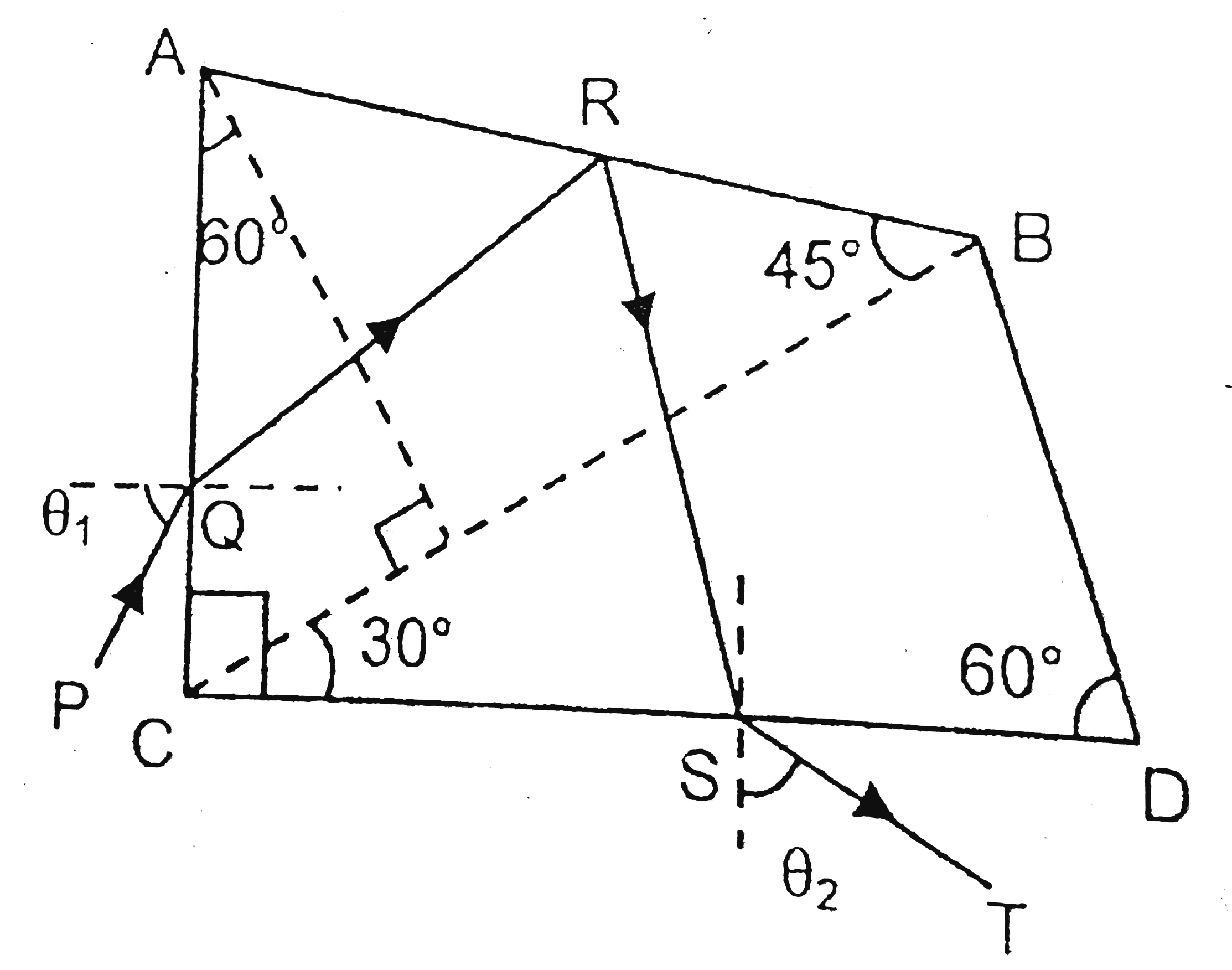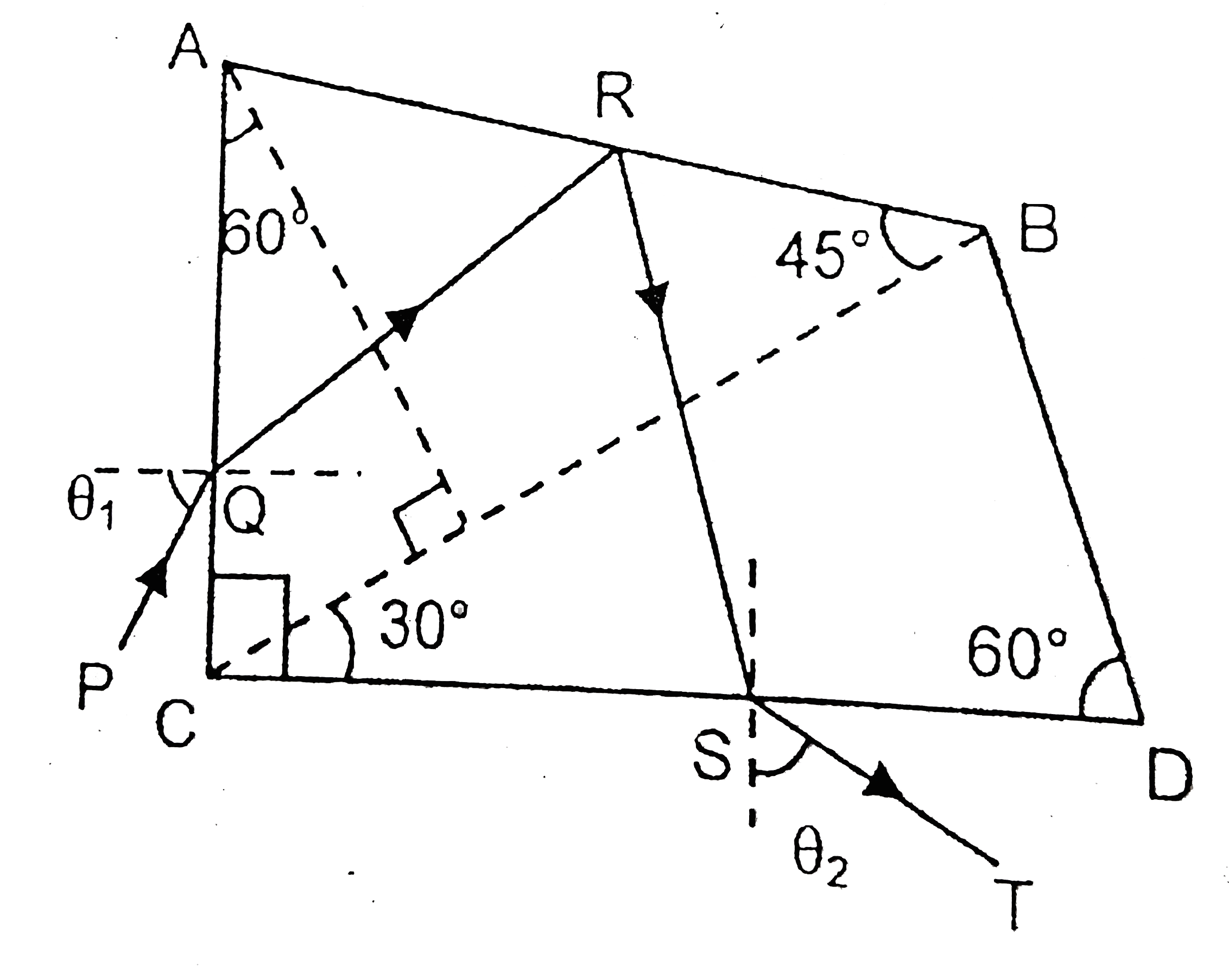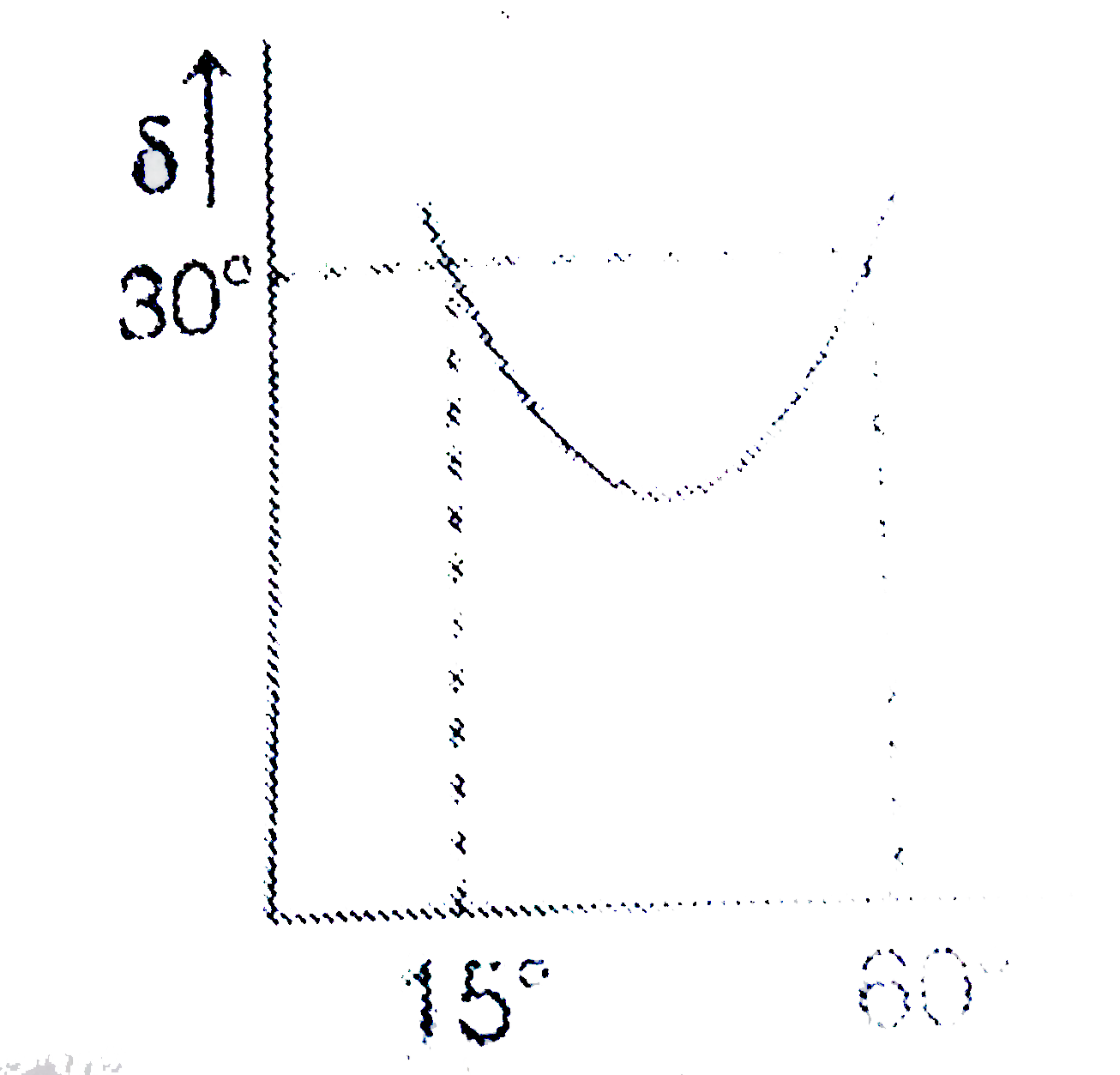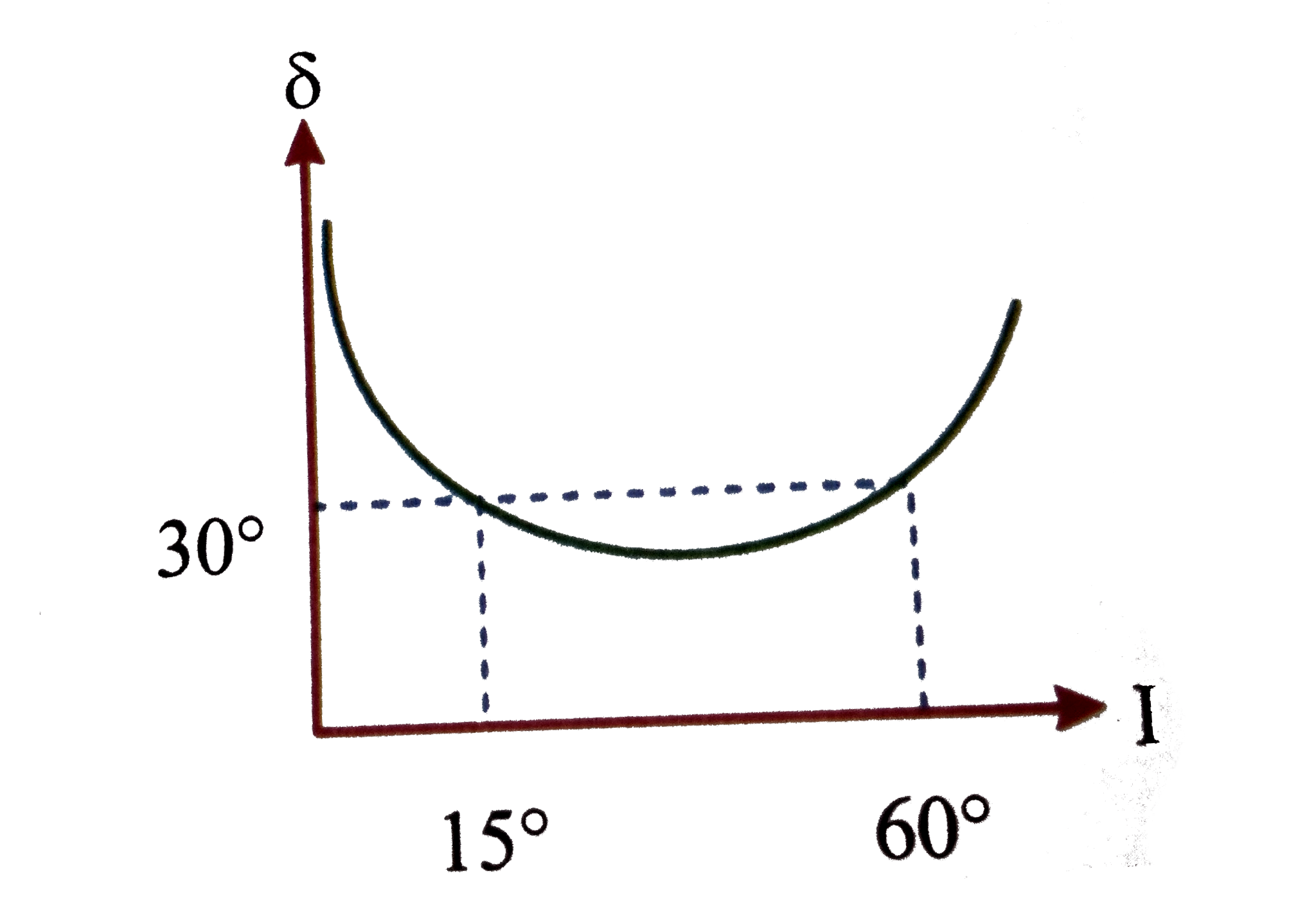
The figure shows a constant deviation prism ABCD. The incident ray is PQ and the emergent ray is ST. Although it is made up of one piece of glass, but it is equivalent to two 30∘−60∘−90∘ prism and one 45∘−45∘90∘ prism.The angle θ1 is the angle of incidence on face AB. The path of the ray inside the prism is indicated in the figure. for this prism μ=2sinθ1.
Q. The total deviation of incident ray when it emerges out of the prism is
60∘
30∘
45∘
90∘
The correct Answer is:A
let r be angle of refraction at θ1
μ=sinθ1sinr,sinθ1=μ2⇒sinr=12,r=30∘
considering ABC as a triangular prism r+r′=A
30∘+r′=75∘⇒r′=45∘
Thus ray is incident on AB at 45∘ it is reflected at the same angle on to CD.
From the figure ∠RSD=360∘−(45∘+135∘+60∘)=120∘
(considering the quadrilateral)
∵ angle of incidence at CD=120∘−90∘=30∘
⇒θ1=θ2
∵ total deviation of ray =(θ1−30∘)+(180∘−90∘)−(θ2−30∘)=90∘
Similar Questions
The angle between the incident ray and the emergent ray in a glass prism is called (angle of incidence/angle of deviation).
View SolutionRead the paragraph and the figure carefully and answer the questions.

The figure shows a constant deviation prism ABCD. The incident ray is PQ and the emergent ray is ST. Although it is made up of one piece of glass, it is equivalent to two 30∘−60∘−90∘ prisms and one 45∘−45−90∘ prism. The angle θ1 is the angle of incidence on face AB. The path of the ray inside the prism is indicated in the figure.
For this prism, μ=2sinθ1
The ratio of θ1θ2 is
View Solution
Knowledge Check
Read the paragraph and the figure carefully and answer the questions.

The figure shows a constant deviation prism ABCD. The incident ray is PQ and the emergent ray is ST. Although it is made up of one piece of glass, it is equivalent to two 30∘−60∘−90∘ prisms and one 45∘−45−90∘ prism. The angle θ1 is the angle of incidence on face AB. The path of the ray inside the prism is indicated in the figure.
For this prism, μ=2sinθ1
The total deviation of the incident ray when it emerges out of the prism isA90∘B60∘C30∘D45∘
The figure shows a constant deviation prism ABCD. The incident ray is PQ and the emergent ray is ST. Although it is made up of one piece of glass, but it is equivalent to two 30∘−60∘−90∘ prism and one 45∘−45∘90∘ prism.The angle θ1 is the angle of incidence on face AB. The path of the ray inside the prism is indicated in the figure. for this prism μ=2sinθ1.
Q. The ratio θ1θ2 isA12B1C23D13Read the paragraph and the figure carefully and answer the questions.

The figure shows a constant deviation prism ABCD. The incident ray is PQ and the emergent ray is ST. Although it is made up of one piece of glass, it is equivalent to two 30∘−60∘−90∘ prisms and one 45∘−45−90∘ prism. The angle θ1 is the angle of incidence on face AB. The path of the ray inside the prism is indicated in the figure.
For this prism, μ=2sinθ1
The angle of refraction on the face AB isA30∘B45∘C15∘D40∘
A thin prism deviates an incident ray by 3.2∘. If the refractive index of the prism is 2.6 then the angle of prism is
View SolutionFigure shows graph of deviation δ versus angle of incidence for a light ray striking a prism. Angle of prism is

View SolutionFigure shows the graph of angle of deviation ∂ versus angle of incidence i for a light ray striking a prism. The prism angle is

View SolutionThe angle of incidence for a ray of light at a refracting surface of a prism is 45∘. The angle of prism is 60∘. If the ray suffers minimum deviation through the prism, then the angle of minimum deviation is:
View Solution
A ray of light incident on one of the face of a prism as shown. After refraction through this surface ray is incident on base of the prism. The refractive index of the prism is √3. The net deviation of the ray due to prism is
View Solution

